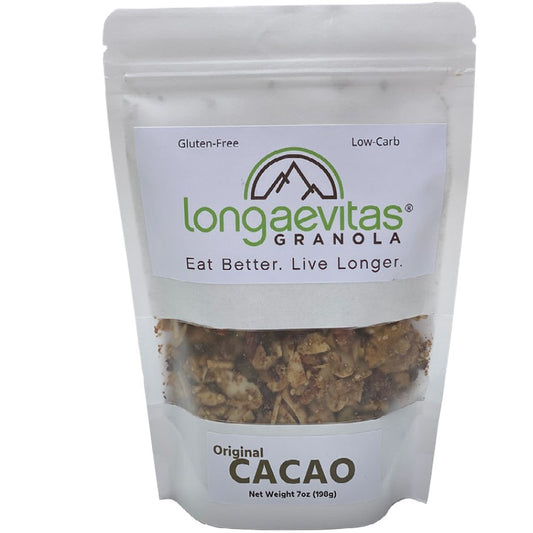While not discussed to the same extent as carbs and calories, we think the Glycemic Load of food is one of the most important considerations. Why? When you understand that too much insulin is the main driver of insulin resistance,* then it stands to reason that you would want to avoid foods that spike insulin.
You see, carbs can raise insulin 10x above normal levels, but not all carbs are created equal. So, it’s one thing to know how many carbs are in the food you’re eating, but the Glycemic Load tells you HOW MUCH carbohydrate in that food can turn into GLUCOSE in the blood.
Glycemic Load vs Glycemic Index
Nutrition can certainly be a confusing subject and understanding the difference between a glycemic load and glycemic index ranks high on that list.
Glycemic Index (GI)
Foods here are ranked on a scale of 1-100 based on how they make your blood sugar rise. Glucose (sugar) is given a score of 100. Obviously, the higher the number the bigger the impact; What the glycemic index fails to take into account is portion size so it doesn’t accurately convey what happens when you actually eat a particular food in real life.
Glycemic Load (GL)
This measure does account for portion size and by doing so it measures not just how quickly a food makes glucose in the bloodstream, but also HOW MUCH glucose is actually available.
Watermelon is a great example of how different those two measures can be. Watermelon ranks very high on the glycemic index at 80, but it’s glycemic load is only 5 because there’s so very little carbohydrate in a serving.
Interpreting GL numbers
A GL of 20 and up is considered High, 11-19 moderate and 10 or below is low. The Nuts we use (Pecans, Walnuts and Almonds) have a Zero GL and they make up the bulk of our products. Hempseed used in our Original CACAO Granola also scores a zero GL as do Sunflower Seeds used in our Cinnamon CEYLON Granola as well as our Seasonal GINGERBREAD Granola. Pumpkin Seeds used in our Savory GOLDEN Granola, Antioxidant-rich MATCHA Granola as well as our Seasonal PUMPKIN Spice Granola also have a Glycemic Load deemed to be negligible.
Diabetics, of course, need to be concerned about the glycemic load of the foods they eat, but so does everyone else. Big swings in blood sugar and insulin wreak havoc on your health and can lead to insulin resistance, diabetes, obesity, and Alzheimers.
Bottom line: all Longaevitas Granola products carry an extremely low glycemic load and therefore can contribute positively to Insulin Sensitivity.
*Insulin resistance exists on a continuum as more and more cells throughout the body become resistant to insulin. As insulin resistance increases, insulin can no longer effectively sweep glucose into cells and so blood sugar will rise and can eventually lead to type 2 diabetes. The important thing to keep in mind is people can have insulin resistance for years before even a pre-diabetes diagnosis is made. Our bodies simply were not designed to handle the amount of carbs and sugar that many indulge in.









